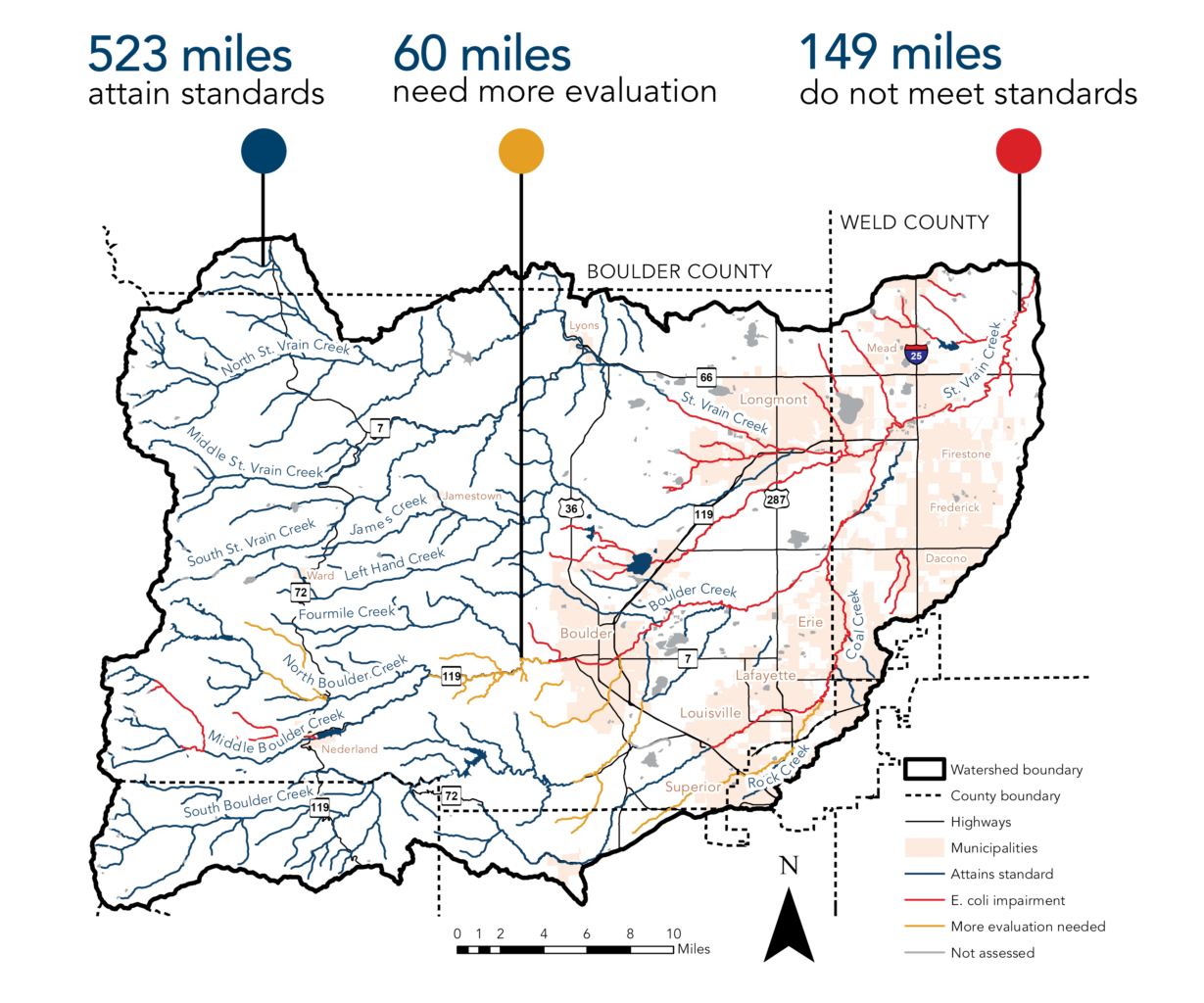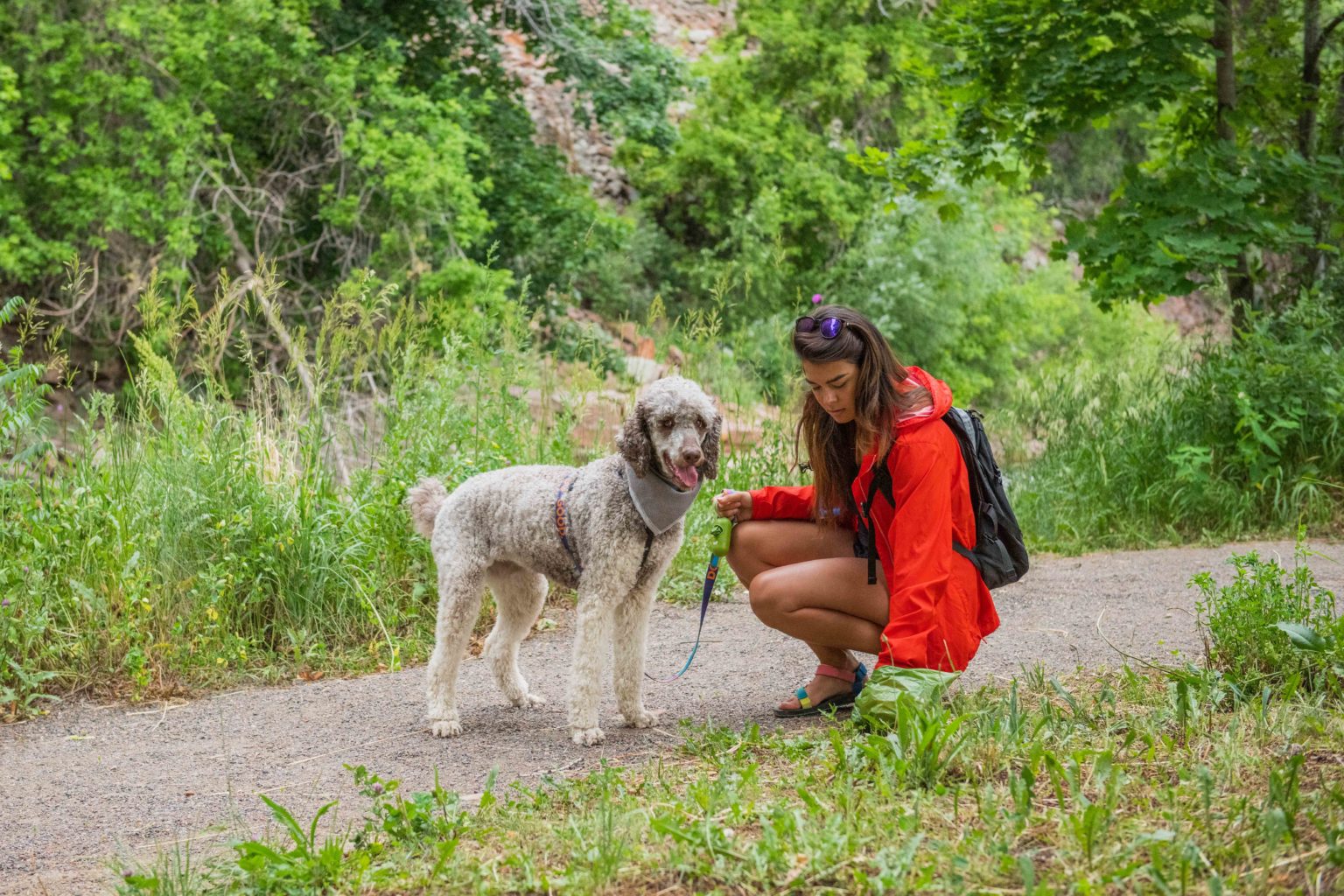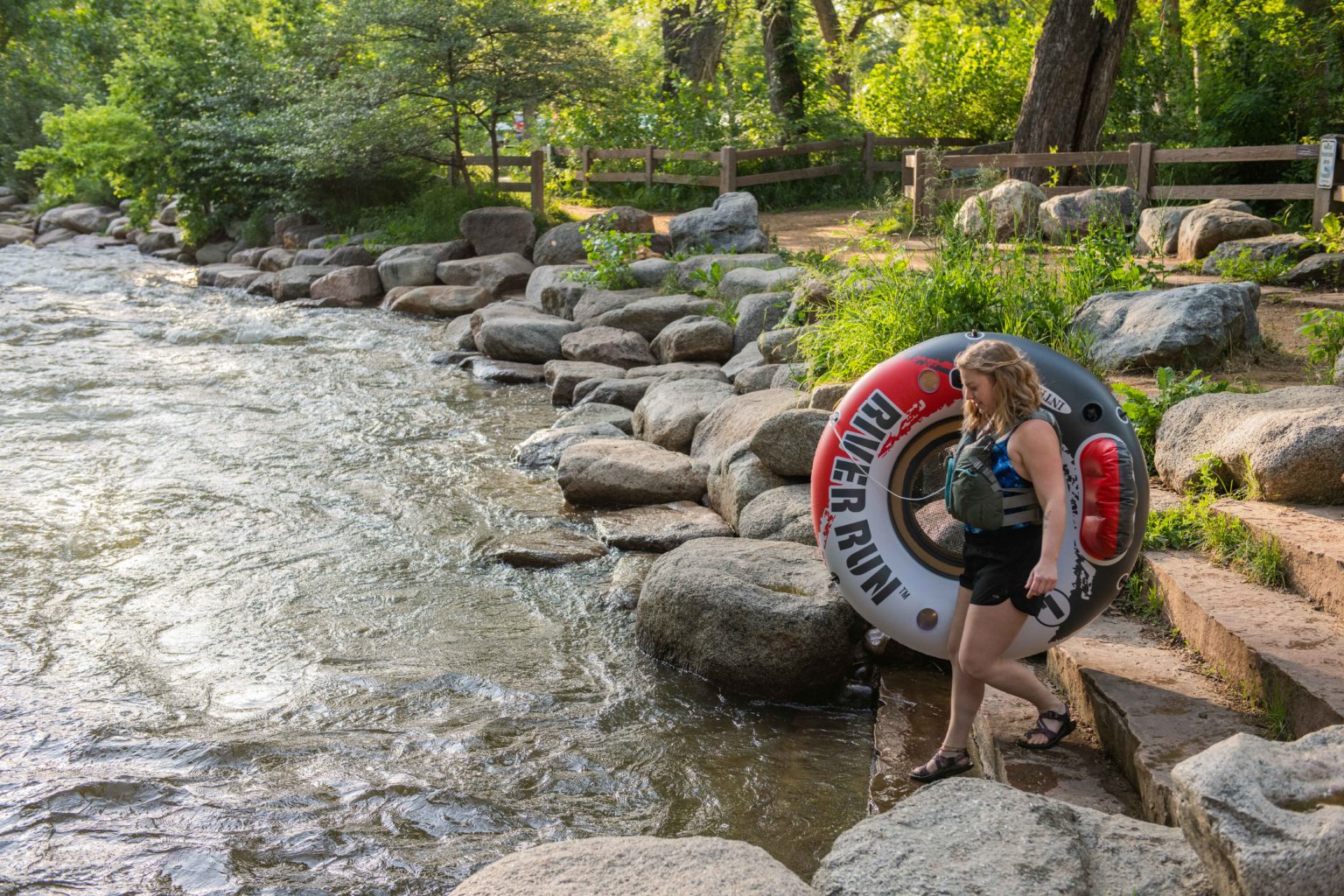What is E. coli?
Escherichia coli (E. coli) is a type of bacteria found naturally in the environment that we measure as an indicator of possible fecal contamination and the presence of pathogens. While E. coli is often harmless, persistently high levels can indicate an increased risk of illness when recreating in a waterbody.
How does E. coli get in our streams?
Primary sources of E. coli include waste from pets, urban wildlife, and livestock as well as garbage and faulty sewers and septic systems. Rain and melting snow pick up bacteria and flow directly into local streams without being treated.




